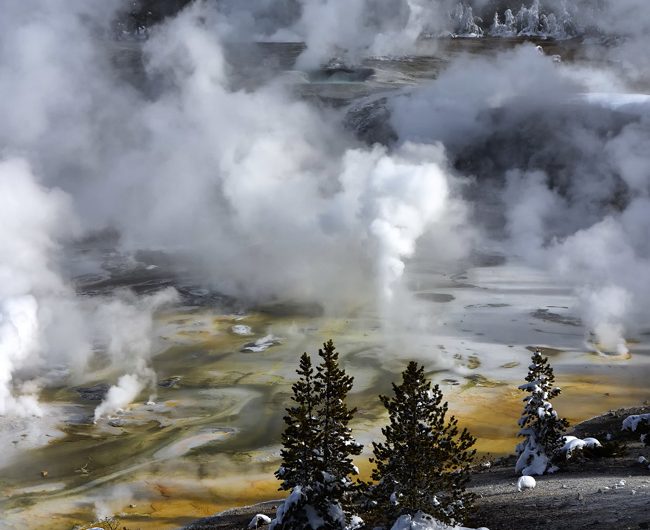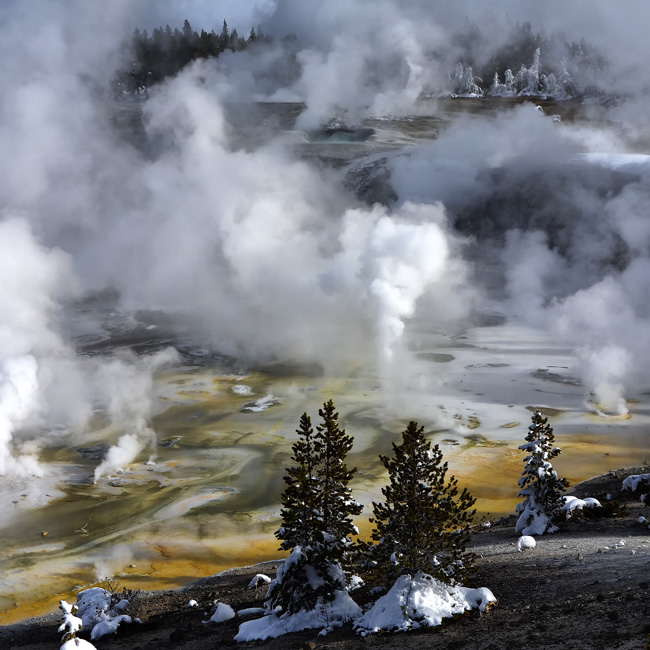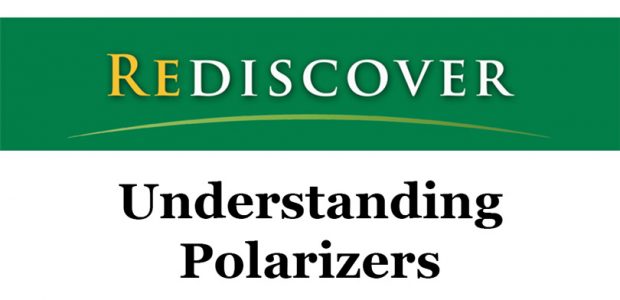

by Nigel Turner
Land Of Fire And Ice

In my last article for LuLa I wrote about the delights of shooting in the Utah and Arizona Wilderness during the hot summer months. But what do I do during the winter? I generally spend a good amount of time in the frozen north and Yellowstone in particular.
Yellowstone in Winter is truly a sight to behold for all landscape and wildlife photographers the world over. Gone are the maddening crowds of summer tourists who arrive in their thousands every day, turning one of the worlds oldest national parks into a daily circus with long lines of traffic and tourists that sometimes get far too close to the wildlife and rather daft stuff around the many thermal features.
Winter visitation is a mere fraction and more often that not, the photographer can almost have many of the locations all to themselves, albeit with his fellow traveling companions.

Lodge Pole Pines

Image No.3 Lone Tree.
Around the middle of November the Park Service closes the park to visitors and private vehicles. This allows the winter snows to build up which provides a good base layer for the roads when they generally reopen the park during the middle of December to snowmobiles and snow buses. Winter visitation however is somewhat complex. The road in the northern part of Yellowstone between Gardiner, MT and Cooke City, MT is kept open during winter, providing conditions allow. The remainder of the park, and the areas, which provide the vast majority of the utmost best photographic opportunities, are closed to private vehicles. This means that anyone wishing to visit has to be on some form of guided tour.
The logistics of visiting Yellowstone for photography takes some good planning and preparation. Every person who enters the park has to be guided and there are only two ways to do this. You can make your way to gateway towns such as West Yellowstone and go on a day trip on either snowmobiles or snow coach to such locations as Old Faithful or the Grand Canyon of the Yellowstone. Anybody who has done this soon comes to realize that this just won’t cut it when it comes to serious photography as you will no doubt find yourselves in the wrong place at the wrong time and always with strict time restraints and accompanied by general tourists.

The Christmas Tree

Venting
The best way is to attend a photographic workshop that has the sole intent to maximize time and effort and one that gives you enough time to linger over one’s subjects. As we all know ‘drive by shootings’ or ‘spray and pray, rarely have a successful outcome when photography is involved.
Also take into account the length of the workshop and the weather conditions that you are likely to encounter. Anything less than a trip of five days could find you in trouble. It’s not uncommon during winter to have complete whiteout or blizzard conditions that can last for a day or two, and should this occur during your visit then valuable time is lost that cannot be made up on the shorter trips.
So just what can the discerning photographer expect when he or she visits Yellowstone during the winter? The answer is spectacular photographic opportunities around almost every corner and not just landscapes but also fantastic wildlife in its natural environs. The atmospheric conditions especially during the morning can be very difficult to comprehend. The harmonious qualities of light when combined with strong compositions and subject matter, along with the ever-changing conditions lead to some of the most powerful images that many photographers are ever likely to capture.

Solitary Moment

Ghosts

Frozen Falls
The best light doesn’t just last for a few minutes either, but more often than not can last for hours at a time! This allows one to really work on each image to get the most from the many varied locations. I normally leave my hotel by 7.30am just as a faint glow of dawn appears in the eastern sky, which gives us time to arrive at my chosen location. The National Park Service doesn’t allow entry any earlier than this.
Due to the time of year, the sun always remains relatively low in the sky and as the early fog begins to lift the show begins in earnest. Everywhere you look there are subjects just begging to be captured, from the grand landscape to the minimal more sublime.

Coyote
But of course there is more to Yellowstone than just the landscapes. During the winter months there is an abundance of wildlife that gathers around the thermal features within the park. Bison tend to migrate from their summer grazing areas to the warmer parts of the park and they can make superb subjects when surrounded by the erupting geysers or steaming fumaroles. Bald Eagles are plentiful and on rare occasions Grey Wolves can be seen. I always bide my time when it comes to shooting the wildlife, waiting for the opportune moments when they are in the best locations.
Of course most wildlife photography requires a certain element of luck on the side of the photographer and needs to be approached as such. Unless you sit in one place in the hope that something may present itself to our lenses, I’ve always felt that it is better to hedge one’s bet and move on to the next location. By moving, who knows what may be just around the next corner!

Bobcat

Bison
I can’t recommend a photographic trip into this winter wonderland highly enough. The ever-changing conditions always amaze me even after many visits.

Bald Eagle
Nigel Turner

Nigel Turner
Nigel has been capturing the landscapes of the American West and exhibiting in galleries in both the USA and UK since 1988.
His work has appeared in many leading photography magazines, including the British Journal of Photography and the Photographic Journal of the Royal Photographic Society plus many of the consumer photography magazines.
He has been conducting his workshop and tour programs continually since 1994, which has had over 1,500 attendees during that time with many repeat clients over the years. He feels extremely lucky to be making his living from what he loves to does, making landscape photographs.
Visit Nigel’s Website
Published On 25 Nov, 2014

Lorem ipsum dolor sit amet, consectetur adipiscing elit, sed do eiusmod tempor incididunt ut labore et dolore magna aliqua. Ut enim ad minim veniam, quis nostrud exercitation ullamco laboris nisi ut aliquip ex ea commodo consequat. Duis aute irure dolor in reprehenderit in voluptate velit esse cillum dolore eu fugiat nulla pariatur. Excepteur sint occaecat cupidatat non proident, sunt in culpa qui officia deserunt mollit anim id est laborum.
Lorem ipsum dolor sit amet, consectetur adipiscing elit, sed do eiusmod tempor incididunt ut labore et dolore magna aliqua. Ut enim ad minim veniam, quis nostrud exercitation ullamco laboris nisi ut aliquip ex ea commodo consequat. Duis aute irure dolor in reprehenderit in voluptate velit esse cillum dolore eu fugiat nulla pariatur. Excepteur sint occaecat cupidatat non proident, sunt in culpa qui officia deserunt mollit anim id est laborum.
Lorem ipsum dolor sit amet, consectetur adipiscing elit, sed do eiusmod tempor incididunt ut labore et dolore magna aliqua. Ut enim ad minim veniam, quis nostrud exercitation ullamco laboris nisi ut aliquip ex ea commodo consequat. Duis aute irure dolor in reprehenderit in voluptate velit esse cillum dolore eu fugiat nulla pariatur. Excepteur sint occaecat cupidatat non proident, sunt in culpa qui officia deserunt mollit anim id est laborum.
You May Also Enjoy...
Rediscover – Understanding Polarizers
FacebookTweet Understanding Polarizers Care, Feeding & Proper Use There are few more important things that a nature photographer can do to improve his or her

